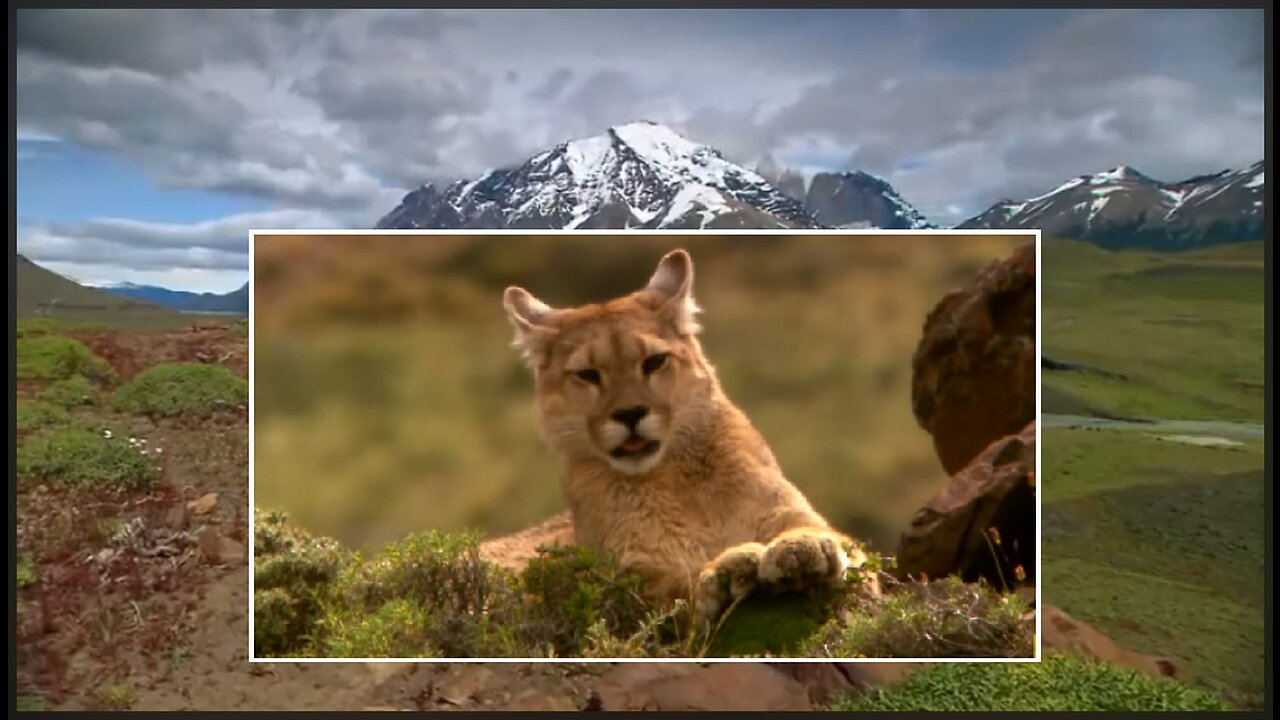Premium Only Content

Documentary: Educational: Pumas Elusive Hunters of the Andes - Animals Nature Cats
Documentary: Educational: Pumas Elusive Hunters of the Andes - Animals Nature Cats - The puma, a member of the family Felidae, has the widest distribution of any New World mammal, with a range extending from southeastern Alaska to southern Argentina and Chile. Pumas live in a variety of habitats, including desert scrub, chaparral, swamps, and forests, but they avoid agricultural areas, flatlands, and other habitats lacking cover.
The puma is active mostly at dusk, night, and dawn. Throughout its range its primary prey is hoofed mammals (ungulates, especially deer) larger than itself. In North America each puma kills about 48 ungulates per year and a larger number of smaller prey, including rabbits and hares, coyotes, bobcats, porcupines, beavers, opossums, raccoons, skunks, and other pumas. Domestic livestock, especially sheep, goats, and young calves, are also taken. It is rare for pumas to feed on carcasses that they did not kill. When hunting, a puma moves about 10 km (6 miles) per night, hunting in several travel bouts averaging 1.2 hours each. Traveling alternates with shorter periods of stalking, waiting in ambush, or resting. Slower than most of its prey, it springs from cover at close range, usually from behind the intended victim. When feeding on a large mammal, it minimizes spoilage and loss to scavengers by dragging the carcass to a secluded cache site and covering it with leaves and debris. During the day the cat commonly beds within 50 metres of the carcass, and it will feed for an average of three nights on a large kill. Except when feeding on large prey, a puma rarely beds in the same location on successive days.
Adult males and females are both solitary except for breeding associations lasting one to six days. Pumas are usually silent, but during this time they emit long, frightening screams intermittently for several hours. Pumas breed throughout the year, with a summer peak in births at higher latitudes. The interval between births is about two years, but it is less if a litter dies or disperses early. Cubs are born after a 90-day gestation period; the litter size usually is three but ranges from one to six. Spotted and born blind, each weighs about half a kilogram.
-
 15:22
15:22
UndeniableTruth
5 days agoEnjoying Golden Years In The Back Yard Until Black Negro Tortures Elderly Couple
5103 -
 LIVE
LIVE
Chad Prather
12 hours agoExtravagant: What Have You Sacrificed For Your Faith?
1,246 watching -
 LIVE
LIVE
The Chris Salcedo Show
12 hours agoAmerica's Anchorman, Maha Rushie, KNEW!
848 watching -
 9:35
9:35
Michael Button
13 hours ago $2.37 earnedStunning New Discovery Completely Rewrites Human Evolution
39.7K20 -
 9:10
9:10
Faith Frontline
13 hours agoJim Caviezel Was STRUCK By Lightning While Playing JESUS… Twice.
2.31K8 -
 10:03
10:03
ARFCOM News
17 hours ago $1.33 earnedDid Colt Help Canada Destroy Guns? | The Witch Hunt For SAF | Sensitive Places Goes To SCOTUS
12.5K8 -
 LIVE
LIVE
BEK TV
20 hours agoTrent Loos in the Morning - 10/09/2025
153 watching -
 10:44
10:44
VSOGunChannel
14 hours ago $0.66 earnedANTIFA Handbook Author Flees the USA
15.3K8 -
 LIVE
LIVE
The Bubba Army
22 hours agoPeace In The Middle East? - Bubba the Love Sponge® Show | 10/09/25
1,795 watching -
 LIVE
LIVE
Times Now World
10 days agoLIVE Jeffrey Sachs | Netanyahu Turned U.S. Military Into His Own War Machine | Times Now World
124 watching
